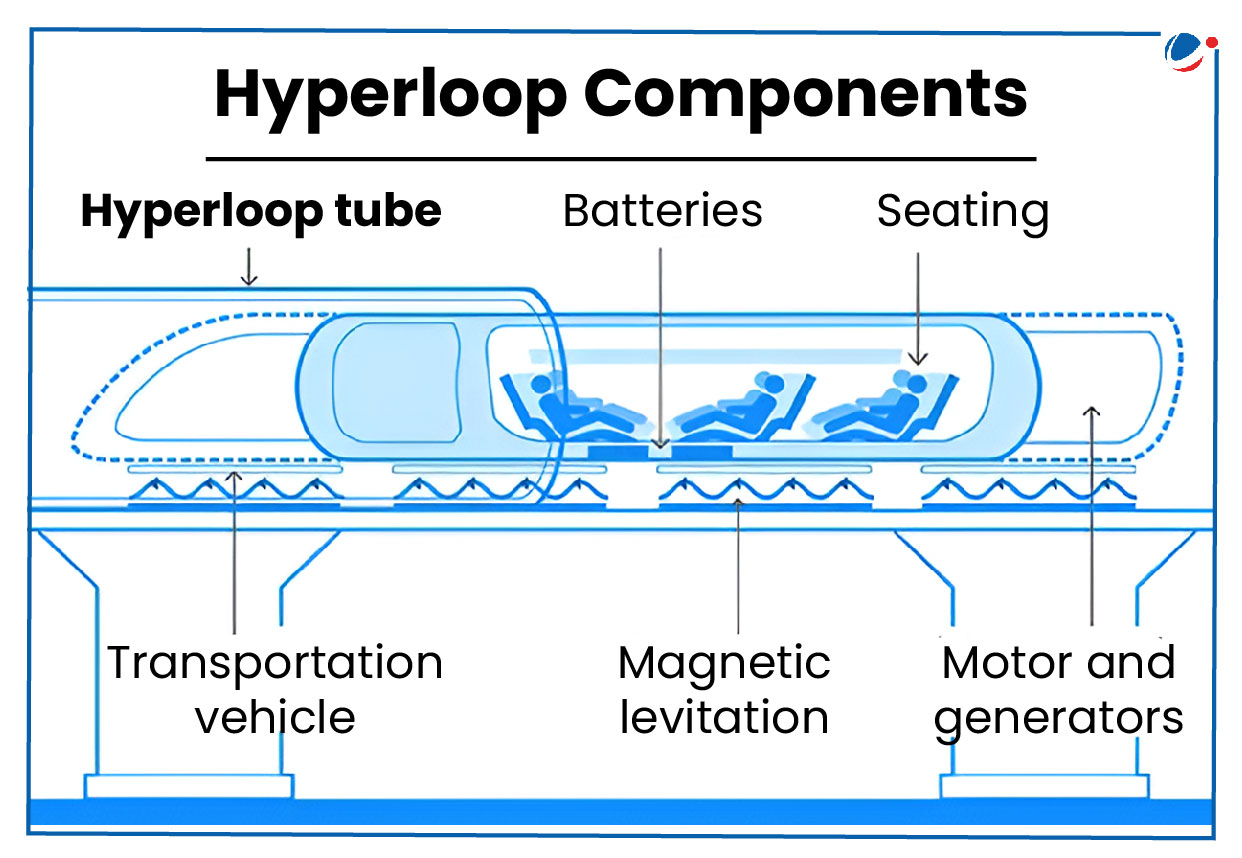Proposed Linear Induction Motor (LIM)-based hyperloop mobility system will connect Jawaharlal Nehru Port Trust in Navi Mumbai to the upcoming Vadhavan Port in Palghar district.

About Hyperloop Mobility System
- In 2013, the CEO of SpaceX, Elon Musk, proposed a concept of ultra-high-speed rail (UHSR) called hyperloop and open-sourced it.
- It is basically a magnetic levitation (maglev) system where pods travel at ultra-high speeds through low-pressure tubes.
- Its Functioning and Key Components
- Hyperloop functions in a sealed tube with minimal air resistance, utilizing vacuums and magnetic levitation for hovering.
- Linear Induction Motors (LIM) propels pods silently enabling the theoretical speed of 1,200 km/h.
- Key components include steel tubes (100Pa pressure), pressurized capsules, a compressor for airflow, and air bearing suspension.
- Advantages: Ultra-high speeds (e.g., Mumbai-Pune in 25 mins), energy efficiency (potentially carbon-free), noise reduction, and logistics redefinition (moving cargo quickly and efficiently).
- Issues with technology: Conceptual status, high costs ($25-$27 million/mile for technology), safety concerns (fire in pods, difficult evacuation), vacuum maintenance challenges, demanding straight-line infrastructure requiring new regulations etc.
Substantial financial backing, continuous research and development complemented by new regulatory frameworks are crucial for overcoming technical and safety challenges of hyperloop technology.





